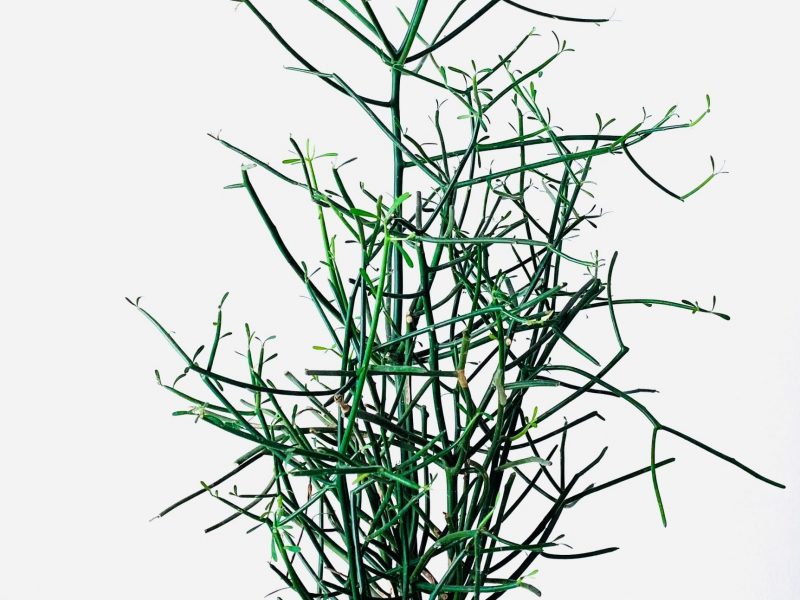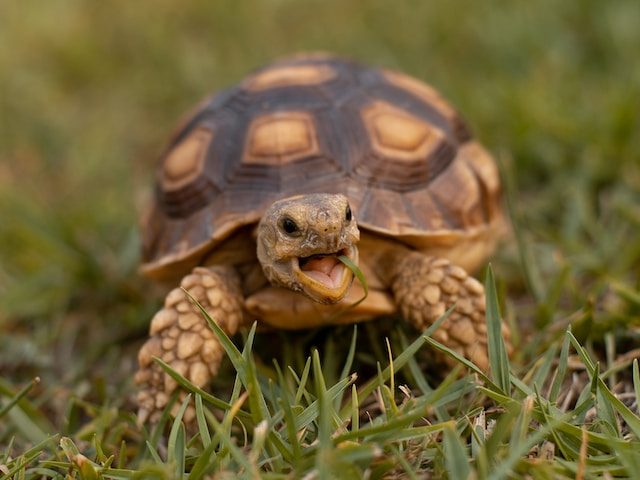
Pencil Cacti are relatively adaptable succulents that can thrive in a wider range of environments compared to a lot of houseplants. However, this doesn’t make them immune to the same common problems that you can face with the rest of your plant collection and if things aren’t right, your plant will definitely kick up a fuss.
In this post, we will go through each of the main problems you might face with a Pencil Cactus, such as brown/ yellow leaves, leaf drop or a drooping/ wilting plant. We will also give you tips on how to solve the issues and prevent them from harming your Pencil Cactus again in future.
Causes of brown leaves on a Pencil Cactus
Underwatering.
Pencil Cacti can be forgiving for the odd time where you forget to water as they don’t really need much moisture to thrive but consistent underwatering can lead to a variety of issues if not sorted; the most common of which is brown leaves that will quite quickly fall off the plant. Before changing how much you water your plant, you want to be sure that a lack of moisture is the issue as your Pencil Cactus will be very sensitive to overwatering. If the soil is dry and feels quite sandy to touch, and the roots look a little crispy and shrivelled, then underwatering is likely the cause. Using a moisture meter is a great way to avoid any more brown leaves on your Pencil Cactus caused by a lack of water in future.
Direct sunlight.
Your Pencil Cactus could be in an area where it’s getting a little too much direct sunlight. Although they do like a good amount of sunshine, there is such thing as too much. This will usually happen during summer when the sun is at its strongest. The perfect spot for your Pencil Cactus is just a touch further inside a bright room. Although it’s impossible to reverse the brown leaves once they have burnt, moving your Pencil Cactus to a new spot should stop any more from developing.
Too much heat.
As well as too much bright sunlight, brown leaves can develop on a Pencil Cactus if the plant is getting too hot. If you’re not already, make sure to open your windows every now and then to make sure that the air in your room is circulating properly. This reduces the risk of hotspots forming in the room where your plant is living. We also recommend investing in a digital thermometer to track any fluctuations in the temperature, so you can prevent the brown leaves from happening again in future.
Causes of yellow leaves on a Pencil Cactus
Overwatering.
Too much water is one of the main reasons why Pencil Cacti develop yellow leaves. As they are a succulent plant, they’re super sensitive to any moisture in their potting mix. Once the roots have started to rot, your plant is unable to take anything up which causes yellowing in the leaves. Take your Pencil Cactus out of its pot to double-check. If the soil is even the slightest bit waterlogged and clumpy then you want to replace it straight away. It’s important that you monitor the moisture levels in your Pencil Cactus going forward so you can adjust your watering schedule accordingly and prevent more yellow leaves.
Natural ageing.
If there don’t seem to be any watering issues explaining why your Pencil Cactus has yellow leaves then it may just be due to natural ageing. Like most other houseplants, Pencil Cacti will drop their oldest leaves in favour of producing new growth. These leaves will turn yellow before falling off the plant. It is totally normal for this to be happening and isn’t because of anything you are doing wrong.
Pencil Cacti lose leaves for a variety of reasons
Cold temperatures.
This is one of the most common reasons why a Pencil Cactus starts to lose leaves. Cold air coming in through air conditioning vents or drafty windows can shock your plant and result in your plant shedding some of its leaves. It can sometimes be difficult to notice drafts so it’s best to pick up a digital thermometer so you can keep an eye on the temperature. They’ll also help you detect hotspots that can cause yellow leaves, so a great investment all around!
Overwatering.
If you find that your Pencil Cactus is starting to lose leaves from the root system downwards, then it may be a problem with the root rot that is causing the issue. Giving them too much water too often is one of the main killers of Pencil Cacti so you need to act quickly if you suspect this is the problem. Pencil Cacti hate sitting in soggy potting mix as this can easily lead to root rot meaning the plant becomes unstable and also cannot get needed nutrients from its root system.
Natural ageing.
If you have gone through all of the above but none of it really fits with why your Pencil Cactus is losing leaves, then it may simply be natural ageing. Over time it’s totally normal for your Pencil Cactus to drop some of its oldest leaves as it focuses on new bigger growth. These old leaves will often turn yellow before falling off the plant. The most important thing here is to monitor the rate of leaf drop compared to the rate of new healthy growth. Your Pencil Cactus should only be losing a small number of leaves compared to new growth.
Why is my Pencil Cactus drooping?
Underwatering.
The first and most common issue that will cause your Pencil Cactus to droop is a lack of water. Check the moisture levels in the potting mix before adjusting your watering schedule. Pencil Cacti need their potting mix to dry out so we recommend increasing how much water you give your plant, rather than how frequently you water.
Overwatering.
Another potential cause of drooping Pencil Cactus leaves is consistent overwatering – yep exactly the opposite problem can cause the same issue. It’s super easy to do accidentally if you aren’t keeping an eye on the moisture levels in the soil and it can cause quite severe problems for your Pencil Cactus fairly quickly. If drooping leaves are the only thing that seems to be wrong with your Pencil Cactus, then this again is good news – it means that the problem is in the early stages and is often easier to fix. Other signs of overwatering include soft leaves, brown or yellow leaves and potting mix that smells damp.
Cold temperatures.
A droopy Pencil Cactus can also be caused by shock from cold temperatures. Pencil Cacti thrive in warm climates and will struggle in homes with cold drafts and will go quite droopy and limp. You may not notice the cold air coming through cracks in doors and windows but if your Pencil Cactus is right next to them then the constant stream of cold air from outside can really shock and damage the plant. Alongside the drooping leaves, you may notice a general lack of growth. Try to draft-proof the windows and doors that your houseplants are near or move your Pencil Cactus into a slightly warmer room in your home.
Those are the most common issues you might run into if you have a Pencil Cactus. The key to reviving a dying Pencil Cactus is making sure you catch the problem as early as possible before it has taken hold of the entire plant. Give your plant a good once over each time you water and invest in gadgets to help you monitor temperature, moisture, humidity and light levels as this will make sure the environment and care are right for your plant.
To learn more about how to best care for your plant, and avoid these problems in future, check out our Pencil Cactus care guide.














